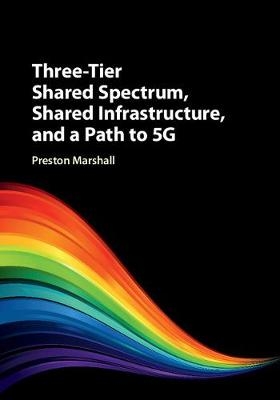
Three-Tier Shared Spectrum, Shared Infrastructure, and a Path to 5G
Cambridge University Press (Verlag)
978-1-107-19696-4 (ISBN)
Written by a leading expert in the field, this unique book describes the technical requirements for three-tier shared spectrum as well as key policy rationale and the impact for 5G. Detail is provided on the inception of the concept and its implementation in the US Citizens Broadband Radio Service (CBRS), along with descriptions of standards for deployment, algorithms required for implementation, and the broader consequences for wireless network and service architectures. The economic and innovation incentives offered by three-tier spectrum are described, along with potential outcomes such as widely deployed neutral host networks. There is also detailed technical analysis of the unique challenges introduced by three-tier spectrum, such as co-existence among non-cooperating networks. Covering a wide range of spectrum bands, International Telecommunication Union (ITU) international allocations, and rule structures that can be adapted for different regimes, this is ideal for an international readership of communications engineers, policy-makers, regulators, and industry strategic planners.
Preston Marshall led the Google and Alphabet Inc. efforts to establish the technical, commercial, and regulatory ecosystem to make three-tier spectrum a success in the USA. He was a major participant in the USA PCAST study that was the basis of the three-tier concept. He chairs the Wireless Innovation Forum Spectrum Sharing Committee, and is founding vice chair of the CBRS Alliance. Previously he was Deputy Director of the Information Sciences Institute (ISI) at the University of Southern California (USC), Research Professor at USC's Electrical Engineering Department, and Program Manager for wireless, cognitive radio, and networking programs at the US Defense Advanced Research Projects Agency (DARPA).
Part I. Spectrum Sharing Background: 1. Introduction to three tier spectrum sharing; 2. Prior dynamic spectrum sharing regimes; Part II. Three Tier Dynamic Spectrum Models: 3. Key aspects of PCAST recommendations; 4. US FCC CBRS regulations, and other international activity; Part III. Components of a Three Tier Architecture: 5. Three tier spectrum admission control systems; 6. Admission control management of access point devices and their clients; 7. Taxonomy of protection methods to be provided across and within tiers; Part IV. Protection Processes for Incumbents and Peers: 8. General process for database system operation; 9. Protection of incumbent satellite operations; 10. Protection to and from terrestrial access points and point-to-point networks; 11. Protection to and from radar systems; 12. Coexistence between unprotected peer devices; Part V. Example Use of Three Tier Spectrum: 13. Device and network interaction with the spectrum access system; 14. CBRS SAS requirements; Part IV. Future Bands, Network Services, Business Models, and Technology: 15. Potential services and business models enabled by three tier spectrum; 16. Candidate incumbent bands for three tier spectrum sharing; 17. From shared spectrum, to shared infrastructure, to a new model of 5G; 18. Future actions to deploy more three tier spectrum bands and nations; 19. Alternatives to three tier operation; 20. Conclusions and a look ahead; Part VII. Appendices: Appendix A. Terms and acronyms; Appendix B. Symbols; Appendix C. Opportunity cost model of spectrum utilization.
| Erscheinungsdatum | 28.07.2017 |
|---|---|
| Zusatzinfo | Worked examples or Exercises |
| Verlagsort | Cambridge |
| Sprache | englisch |
| Maße | 179 x 254 mm |
| Gewicht | 830 g |
| Themenwelt | Technik ► Nachrichtentechnik |
| ISBN-10 | 1-107-19696-5 / 1107196965 |
| ISBN-13 | 978-1-107-19696-4 / 9781107196964 |
| Zustand | Neuware |
| Haben Sie eine Frage zum Produkt? |
aus dem Bereich


